How Do Dogs Get Coronavirus?
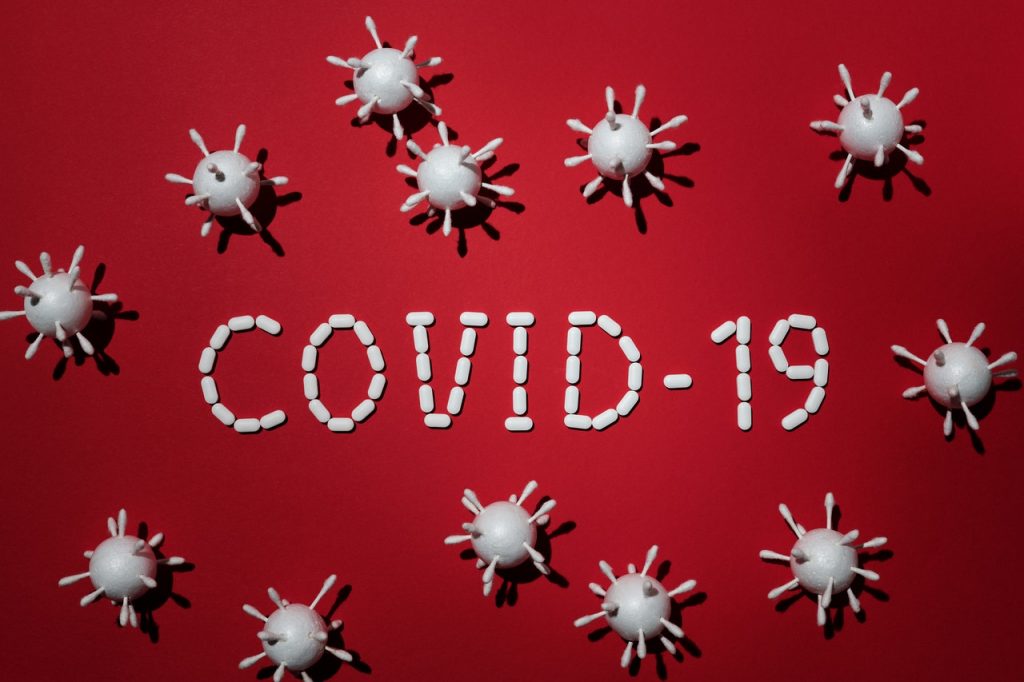
The coronavirus (COVID-19) pandemic is no wonder the scariest thing at the moment. It is even much frightening when you hear that coronavirus can infect dogs in your home or around your neighborhood. Although it has become popular in recent days, the virus has been in existence for over a century.
In veterinary and human medicine, coronavirus is of great medical concern since it has been known to cause serious respiratory and intestinal infections. There is news that pets such as cats and dogs can contract and transmit COVID-19. However, it is important to note that these animals have their own type of coronavirus.
Recent reports from the Hong Kong's Department of Agriculture, Conservation, and Fisheries indicated that a German Shepherd tested positive along with its owner. However, another dog (mixed-breed) from the same home tested negative. To date, the two dogs have never shown coronavirus symptoms.
In the same Hong Kong Island, a Pomeranian who tested positive died 48 hours after being released from quarantine. Although an autopsy was never carried out, the dog might have died from old age and stress from being isolated from its owner.
The World Animal Health Organisation and the American Veterinary Association report that there is no confirmation at present to show that dogs or any other pet can be infected with COVID-19. However, it is important to take the necessary precautions to avoid infecting or getting infected by your dog.

If dogs were to be affected by COVID-19, it would be by means through which the virus is transmitted among people: inhaling droplets or ingesting fluids that contain the virus. Therefore, avoid kissing your pet, walking it in crowded areas, and wash your hands after touching it.
Although vet diagnostic experts assert that there is no proof that coronavirus can be passed to dogs, it is very important to note that there are coronavirus types that affect dogs only. So, it leads us to the question: What is dog coronavirus, and how do they get it? The dog coronavirus is known as a canine coronavirus (CCoV), and it is a contagious virus that attacks the digestive tract of dogs. The disease normally lasts for a few days but causes severe damage to the gut and may result in death.
Canine coronavirus is mainly acquired through ingesting or orally coming in contact with infected fecal matter. No evidence has been found to indicate if other transmission mechanisms like aerosol and skin contact can apply to CCoV. Getting into contact with ill dogs and feeding on contaminated food may cause your dog to be infected.
After intake, CCoV will infect and replicate inside the part of the epithelial cell known as the cytoplasm. The epithelial cells are then eaten up, causing the small protrusions (the villi) along the intestinal wall to degenerate. The deterioration of the cells is marked by the loss, distortion, and shortening of the microvilli, which are very critical in the absorption of food into the bloodstream.
Distortion of the microvilli further causes the necrotic cells to slough into the alimentary canal. The disruptions in the morphology of the intestines cause a disturbance in digestion and absorption of food.
Unhygienic and crowded conditions highly favor the transmission of the virus. After the contraction of the virus, it may take up to four days for symptoms to manifest. Actual illness may last for two weeks. However, subsequent infections resulting from other viruses, parasites, and bacteria may extend sickness. After recovery, dogs may remain to be carriers for about 42 weeks.
Disturbed by the Question: What Is the Coronavirus in Dogs? - Here Is What You Should Know
Canine coronavirus (CCoV), also referred to as canine enteric coronavirus, is a member of the alpha-coronavirus that infects dogs, which usually live in groups mainly in breeding sites, shelters, or kennels. The virus has a close relation to enteric coronavirus that infects pigs and cats. However, it is not the same as the COVID-19 that is currently ravaging the human population.
Traditionally, canine coronavirus has been causing gastrointestinal symptoms that are mild in dogs. Presently, the virus is reported to be causing life-endangering infections characterized by the systemic and intestinal rapid dissemination of viruses. CCoV is regarded by scientists as a budding disease that is highly infectious. Its severity is attributed to the fact that the strains of CCoV can combine and recombine as soon as they enter the host body.

Experts started to refer canine coronavirus as a pathogen in 1971 when research indicated that it caused gastro-enteritis in army dogs. Before this, the virus was known to cause mild enteritis that was exhibited by slight diarrhea. In the preceding years, the impact of coronavirus led researchers to shift from the question: “What is the coronavirus in dogs?” to aspects such as the molecular study of the CCoV serotypes and ways to understand how the infection can be combated.
There are fears that due to mutations and recombinations within this group of viruses, the possibility of the emergence of novel canine coronaviruses with unique pathogenic features is very high.
Can Coronavirus in Dogs Spread to Humans?
At this time, everyone is afraid of coronavirus, whether it is a dog or a human one. After the emergence of COVID-19, initial reports indicated that the disease was possibly passed to human beings by animals. Since the breakout of the infection in December 2019, researchers have rushed to try and decipher the genesis of SARS-CoV-2, also identified as HCoV-19, the virus causing COVID-19.
Studies indicate that the virus is among the seven pathogens that can infect the human race within the coronavirus family. Others are 229E, OC43, NL63, and HKU-1 in the category that causes mild disease, and MERS-CoV and SARS-CoV, which have been proven to cause serious symptoms. All these viruses have special properties that enable them to enter and live in the human cells. Optimization for their attachment to the receptors in the cells is mainly facilitated by rapid mutations and a chemical feature known as polybasic furin.
On the other hand, canine coronavirus lacks the features of the COVID-19 causative virus, and, as of now, it can't harm people according to cdc.gov. However, with the swift evolution exhibited by these organisms, it is essential to stay aware and take caution when handling your sick dog.
After all, it is said that the coronavirus pandemic being witnessed now might have come from snakes in the Hunan trading market, Wuhan, China. The first step to protecting yourself and your dog is to restrict it from wandering to eliminate the possibility of it bumping into coronavirus dogs and eating infected poop. Most importantly, bath your dog regularly and stick to general hygiene practices.
What Is the Coronavirus Vaccine for Dogs?
To date, coronavirus infection in dogs has spread to many parts of the globe, and it continues to spread more. Although its infection is mild, it can spread fast and cause severe secondary illness that may kill. Most puppies under 3 months of age are less likely to survive once they contract CCoV and acquire other related diseases. There is no known cure for canine coronavirus. Antibiotics and other medications do not work against viral infections, but they can be used in treating secondary infections caused by bacteria.
The most commonly used treatment method is stopping feeding the dog for a day after diarrhea has ended. You will then reintroduce feeds gradually as your dogs continue to recuperate. In cases where there is extreme dehydration, vets can rehydrate the patient through IV (Intravenous) method, thus helping to balance electrolytes as well.
Given that there is no confirmed treatment for canine coronavirus, early prevention is of great importance to keep away the disease. Vaccination is among the best prevention mechanisms to ensure that your dog does not become sick.
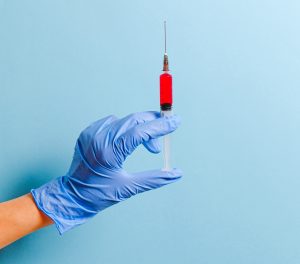
However, it is not recommended for all dogs and will be administered based on the risk assessment and lifestyle of your dog. The vaccination process majorly entails the administration of an immunogenic shot. The shot consists of an attenuated form of canine coronavirus strain that is prepared by controlled heating or chemical process.
Coronavirus vaccine can be prepared by artificially manufacturing antigen that mimics the chemical properties of CCoV that evokes the production of antibodies against the virus. The antigen is always developed for both CCoV I type and II and administered at the same time.
There is also a vaccination method referred to as passive immunization treatment/therapy. Anti-coronavirus blood plasma is taken from an immune dog, then anti-carrier protein and hyper-immune globulin are sampled out. The latter can be used to induce passive immunity against CCoV infections.
The receiving dog will produce antibodies in response to the immunoglobulin, thus safeguarding its body against future CCoV infection. Above all, get in touch with a professional for more help on coronavirus vaccine in dogs. It will help you take precise steps to protect your pet's wellbeing.
Professional Details on How to Test for Coronavirus in Dog
You may witness coronavirus symptoms in dogs only after four days since the contraction of the virus. The signs that will manifest will include:
- Diarrhea
- Weakness
- Depression
- Dehydration
- Anorexia
- Drowsiness
- Vomiting
However, the above signs can also be seen when the dog has contracted other diseases which can be bacterial or viral. To ensure that there is no misdiagnosis, a lab test is carried out to determine the exact nature of the pathogen. As soon as the symptoms are observed, samples of fresh stool should be taken to the lab for testing. Alternatively, samples from the target dog can be collected by the rectal swab.
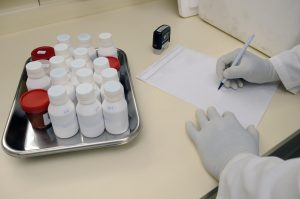
From the samples, DNA and RNA and DNA are taken out from the centrifuged and homogenized fecal matter. The nature of the DNA and RNA are then determined through a process known as a polymerase chain reaction. The process of identifying the viral DNA and RNA is complex and will require specialized attention in all stages.
For instance, DNA extracts need 1:10 dilution in pure water to minimize the efficiency of inhibitors to a very low level. For detecting RNA, reverse transcriptions are needed on top of PCR (polymerase chain reaction) to establish the nature of the nucleoprotein, which is a major defining factor in RNA. Finally, sequence analysis is applied to establish if the virus strain is CCoV type I or type II
Thinking of How Common Coronavirus In Dogs Is? - Here Is What You Should Know
In 1970, canine coronavirus was detected in German military dogs. It was the first scientifically proven existence of CCoV. From then on, the virus has been reported to parts of the world, including Asia, Australia, Africa, North America, and Europe. As of now, any dog can catch and transmit the virus. Proper sanitation, isolation, and coronavirus in dogs vaccine are among the best ways of breaking the transmission route of CCoV.
Wish to Know How Is Coronavirus Tested in Dogs?
First, it is very significant to understand which coronavirus is on your list. If it is the CCoV, we have provided a comprehensive description of how testing is carried out on sampled fecal matter as well as how identification and characterization of CCoV DNA and RNA are made. For the COVID-19, detection is effected through checking dog temperatures, respiratory problems, lethargy, and depression. Lab test on the blood sample is also necessary to determine the exact species of the virus.
Reliable Information on What Else Acts Like Coronavirus in Dog
Diarrhea and vomiting serve as very crucial coronavirus in dogs symptoms, particularly in the early days of life. However, these symptoms are also evident in other viral infections, and the possibility of misdiagnosis is quite high.
There exist many aetiological factors related to diarrhea caused by viruses. They include:
- Nutritional
- Environmental
- Toxicological
- Immunological
- Secondary infections
Different enteric viruses lead to diarrhea of varying severity, which can be accompanied by other signs such as vomiting and depression, and even systemic illness in a dog. Case study reports show that a large number of dogs that are purchased (54%) exhibit health problems like vomiting, diarrhea, and coughing.
Furthermore, diarrhea and vomiting (gastrointestinal issues) were prevalent in young dogs where respiratory problems like coughing were mostly found in mature dogs. Below, we explore other viruses besides canine coronavirus that commonly infect the intestines of dogs with particular focus on pathogenesis and etiology. Note that coronavirus vaccine dogs can still be infected by these viruses.
Canine distemper virus
Canine distemper viruses abbreviated as CDV is among the most destructive pathogens that can infect most dogs and cats, family members. It was first discovered at the beginning of the 20 century. Currently, it is a problem in almost every part of the planet. CDV shows both early and late phases. It normally enters the host body via an oro-nasal mechanism (by mouth and nose).
At the start, it can be located in the larynx and the lymph nodes in the bronchus. In the subsequent phases, viremia associated with the leucocytes distributes the viruses to other tissues and organs in the body. Within 6 days of incubation, the initial (acute) phase manifests in the form of depression and biphasic fever. Canine distemper can spread to too many organs within a very short period with the digestive, nervous system, and respiratory organs under the gravest danger.
The signs, as shown in the table below:
System | Organ / Tissue | Symptoms |
|---|---|---|
Respiratory | Lungs, Bronchus, Bronchioles, Nose, Larynx | Ocular and nasal discharge, tonsillitis, bronchitis, laryngitis, coughing, pleuritis, bronchopneumonia |
Digestive / Gastrointestinal | Stomach, Small intestine, Large intestine | Hemorrhagic diarrhea, anorexia, vomiting, appetite loss |
Nervous | Brain, Spine | Ataxia, myoclonic spasms, depression, paresis, tonic-clonic spasms, death |
During illness, it is important to know that diarrhea in your animal can be caused by only a canine distemper virus or a combination of several pathogens. In the late-cycle(after 9 days), the viruses by-pass the barrier between the brain and the blood, thus infecting glial cells and neurons and leading to extreme symptoms such as paresis followed by death.
Mortality and morbidity rate are quite notable in dogs that are not immunized, although symptoms can be encountered in dog populations that have been vaccinated. Out of 10 dogs, between 3 and 8 are likely to die from CDV. Survivors never recover fully, and they will remain with neurological issues like epileptic-muscle attacks.
Canine adenovirus
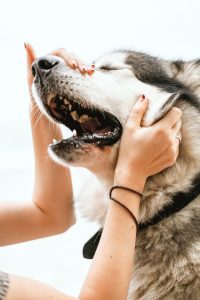
There are two strains of canine adenovirus that affect dogs, namely, CAV-1 and 2. CAV-1 is known to invade the endothelial cells and the liver mainly. In some cases, it is referred to as canine hepatitis. CAV-2 is commonly understood to infect respiratory organs like the lungs and the windpipe.
Most clinical indications are digestive tract signs such as watery diarrhea, abdominal pains, vomiting, bleeding on the intestinal, and mouth mucosal lining. Other symptoms include fever, leukopenia, depression, jaundice, and anorexia. The use of vaccination decreases susceptibility and mortality rates. Although it affects all dogs, puppies with poor immunity appear to be the most affected.
Canine parvovirus
Canine parvoviruses that can infect dogs are divided into two species, namely CPV type I and CPV type II. CPV type I affects dogs mildly, whereas CPV-II causes severe symptoms, including bloody enteritis, myocarditis, and vomiting. The virus is known to have wiped over a million dogs in Australia, North America, and Europe. The severity of the virus is attributed to its ability to mutate first and adapt to new conditions. Also, some section of scientists argues that the vaccine could have modified during culturing hence instead of performing its immunization function, it became a pathogen.
Canine rotavirus
Canine rotavirus causes localized infections along the alimentary canal in dogs, especially very young ones. The seriousness of the virus’s health symptoms ranges from mild to very severe. Concurrent infections with protozoa and bacteria are widespread. Infection severity is favored by poor maternal immunity, young age, high viral virulence, and subsequent infections. Signs of illness include fast dehydration and yellow-watery diarrhea. Rotavirus usually infects the epithelium lining resulting in degeneration of the villi and microvilli.
Canine caliciviruses
Canine calicivirus (CanCV) causes gastroenteritis infections alongside other generalized clinical conditions in dogs. Additionally, dogs are also easily attacked by a feline calicivirus. Symptoms include glossitis, genital infections, and critical diarrhea.
Other viruses that can infect dogs and cause symptoms similar to those of canine coronavirus include:
- Canine astroviruses
- Orthoreoviruses
- Canine herpesvirus (CanHV)
- Torovirus
- Papova-virus
- Picornavirus
When Do Dogs Need the Coronavirus Vaccine?
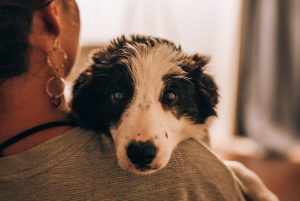
Prevention is always the most appropriate technique to fight diseases. It is because most disease-causing organisms enter the animal’s body unnoticed. The incubation period may sometimes last for up to a week. By the time coronavirus symptoms in dogs are observable, the viral load will be very high, and controlling the disease may not be easy considering that CCoV has no treatment.
Since viral diseases can attack dogs of any age, vaccination should be carried as early as possible. Also, you should consult a specialist for more advice on how to vaccinate your dog, including spacing between specific viral immunizations and when to repeat if necessary. Ask for guidance on a feeding program that can boost your pet's immunity and overall health. It will ensure that both you and your dog are always happy.
Why Should Dogs be Vaccinated Against Coronavirus?
Coronavirus dogs are at a very high risk of dying if they develop accompanying infections. Although scientists at cdc.gov say that the disease is not life-threatening, the fact that it can cause secondary makes it very lethal.
Besides, the virus doesn’t always cause symptoms for approximately the first four days of incubation. You’ll only start suspecting when you start noticing unusual behavior like drowsiness, lethargy, and diarrhea. Given that the disease cannot be cured is perhaps the most important reason why coronavirus in dogs vaccine must be administered on time. It will help your dog to be immune against CCoV and consequently keep at bay secondary infections.
Where Do Dogs Get Coronavirus?
In surveys carried out in Albania and Greece on different dog breeds in different locations, the analysis of stool samples that over 90% of amino acids from the CCoV serotypes demonstrated that dogs usually contracted the same strain of canine coronavirus during the ailment period. It shows that once a disease enters a dog population, it will quickly spread out infecting all the animals regardless of their age or breed. The main reason for the fast and extensive spread of the disease is unhygienic conditions that favor the survival and replication of the virus.

Apart from contracting CCoV inside kennels, the disease can also be transmitted in open grounds, walkways, and breeding facilities. Since coronavirus dogs can be passive carriers of the virus for almost 6 months, you may import the disease to your immediate environment that will affect many other dogs.
In most instances, the CCoV epidemic is accompanied by infections from other viruses such as the CPV, CDV, rotavirus, among many others. A proper comprehension of CCoV disease and co-infections is necessary to understand coronavirus dogs vaccine benefits and the best immunizations strategies that will ensure that your dog is free from viral infections.

